A perfectly grilled steak is a hallmark of classic American cooking. The rib-eye steak, which is one of the most flavorful and tender cuts, is also one of the most popular choices for grilling, due to its high fat content and luscious flavor.
Geography
The rib-eye steak comes from the rib area of a cow, located just behind the shoulder or chuck section. The area behind the ribs is known as the short loin, which is where T-bone and porterhouse steaks come from. Because these muscles are not worked very much, steaks from this area are generally tender and well-marbled with fat.
Types
There are two types of rib-eye steaks--bone-in and boneless, also known as a Delmonico steak. Some believe that the bone-in version has more flavor than the boneless, due to the extra fat that remains attached during cooking. Unfortunately, selling the steak with the bone in may allow unscrupulous butchers or retailers to charge more for the steak than they should, since the inedible bone adds weight to the steak. Bone-in rib-eye should generally be several dollars cheaper per pound than its boneless counterpart.
Size
Rib-eye steaks can range from 8 ounces to several pounds in weight, depending on how thickly they are cut. A typical restaurant cut is a 1-inch thick steak, which will usually weigh between 16 and 20 ounces. Steaks between 1 and 2 inches thick are easiest to cook properly. A rib-eye steak of this thickness allows the cook to sear both sides of the steak well without overcooking the inside of the meat.
Warning
Rib-eye steaks should be cooked between rare and medium, with medium rare being the recommended temperature. A rib-eye steak cooked past medium will likely be dry and tough. Those who enjoy eating a steak's fat may wish to remove some of the fat on a rib-eye before cooking and grill it separately. Because rib-eyes are so tender and marbled, they are best-suited for dry cooking methods like grilling. Thicker cuts may be started on the grill and finished in the oven.
Misconceptions
Some cooks confuse other cuts, like the similarly named eye of round, with the rib-eye. Eye of round is an economical cut, but unfortunately it is no substitute for rib-eye. Eye of round comes from the hindquarter of the cow, and although it is more tender than some of the other round cuts, it is extremely lean and much tougher than rib-eye.
Related Articles

How to Grill a Ribeye on a Weber Q
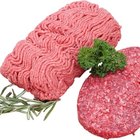
What Cuts of Meat Are Used for Ground ...

How to Cook Kobe Steaks

How to Cook a Petite Filet of Beef in ...

What Is Sirloin Roast?

Types of Steak: Rare and Medium Rare

The Best Way to Prepare Bison Sirloin
The Differences Between Prime & Dry ...

How to Cook London Broil
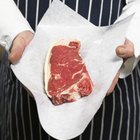
Tenderloin Filet Vs. Top Sirloin
How to Cook Buffalo Fillet
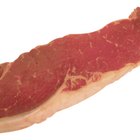
The Difference Between a Sirloin Roast ...
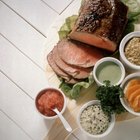
How to Cook 5 Lbs. of Beef Tenderloin
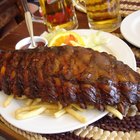
How to Buy the Best Spare Ribs at the ...
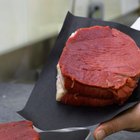
How to Slice Round Steak for Jerky

Brisket vs. Tri-Tips
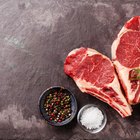
How to Cook Cowboy Cut Ribeye

How to Cook Steak on a Baking Sheet

How to Get Skirt Steak Tender

Is the Rib Eye or Sirloin a Better Cut?
Writer Bio
Lindsay Woodland is a professional opera singer, semi-professional pastry chef and personal finance enthusiast from Queens, N.Y. She holds a bachelor's and master's degree in music and speaks German and Italian in addition to her native English. Woodland has been a freelance writer and editor since 2008 and writes for multiple websites and blogs.